I think I can safely say that Good Soil is the only book I possess that has both ‘Pee‘ and ‘Poo‘ as chapter headings. Those chapter headings give you a clue to what sort of book this is: mostly, it is about how to nourish the soil with the macro- and micronutrients plants need to thrive (many of which abound in pee and poo), and it takes a chatty, no-nonsense approach to the subject.Good Soil is a somewhat misleading title – you won’t, for example, find any significant discussion of drainage problems and how to deal with them – but the subtitle, ‘Manure, Compost and Nourishment for Your Garden‘ sets things straight.

‘Good Soil‘ by Tina Råman
The publisher’s blurb describes Good Soil as “already a gardening bestseller in Sweden, Norway and Germany”. I think it is fair to say that it’s a book that will be useful mainly to those of us who garden at high latitudes: it is very much geared to a climate with cold winters, a galloping runaway phase of growth in spring and early summer, and then a gradual shutdown through late summer and into autumn.
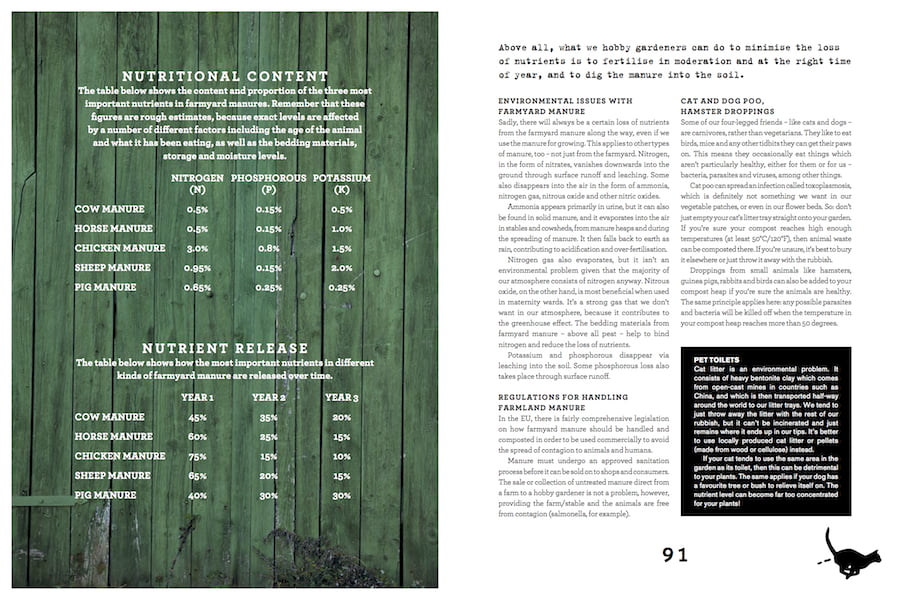
Good Soil pages 90-91
I admit I have never really got the hang of fertilisers and how to use them. I have a rough understanding of NPK values; I know, for example, not to use a high-nitrogen fertiliser late in the growing season, and that potassium promotes flowering, but that’s about it. This book will, I suspect, become my fertiliser bible. I don’t think I’ll be going to the lengths of peeing in the compost heap but I will consult Good Soil for advice about what sort of fertiliser (or combination of fertilisers) to use, when, how often and in what quantities, for a range of different plant types and gardening applications. The layout will help with that: each section of text, which explains the background and theory, is accompanied by a summary box with the take-home message, for easy reference.
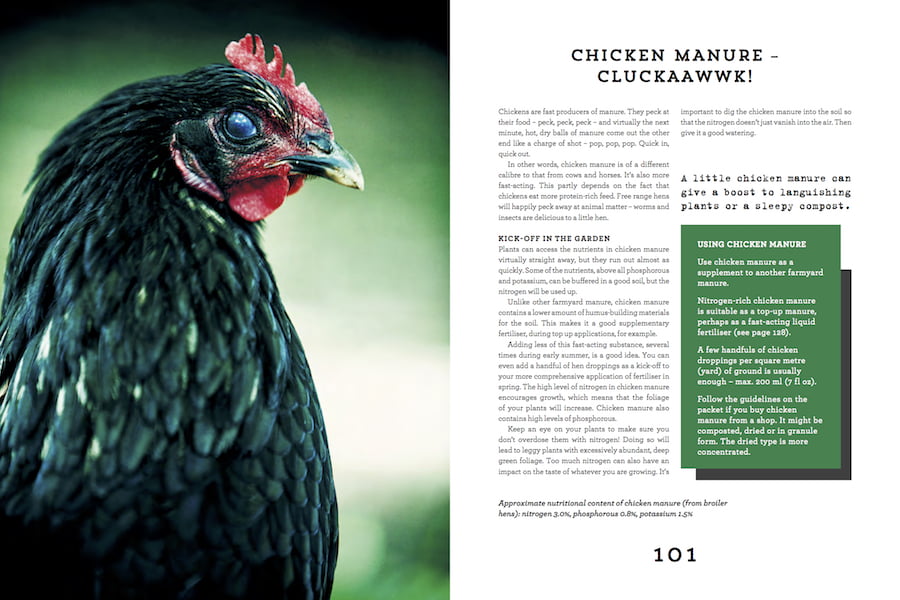
Good Soil pages 100-101, with useful summary box
As you might expect from a book that originated in Scandinavia, there is a welcome emphasis on environmental sustainability. I learned a lot about the environmental impact of the production and use of different kinds of fertiliser. Although there are no ready solutions, we can at least try, with the help of books such as this, to choose products and adopt practices that minimise environmental depletion and degradation. The authors advocate ‘natural fertilisers’ such as different types of farmyard manure, or seaweed – or even urine – but do make the point that the actual elements and compounds that reach the plant, and how the plant uses them, are the same whatever their origin. Scientifically, the book seems sound.
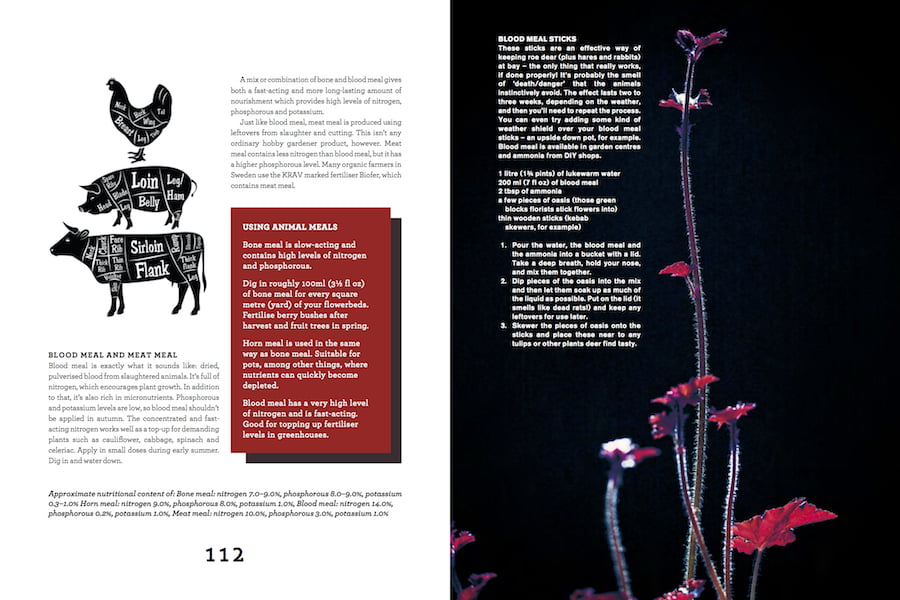
Good Soil pages 112-113
In practical terms, many of us may struggle to access some of the specific types of manures and fertilisers the book discusses. In the UK, for example, the major garden centres stock ‘farmyard manure’ (often organic), though they don’t specify its animal origin so if you want to go for the specific properties of cow, pig or horse manure, you’ll probably need a friendly farmer and a means of transport. Products such as blood meal, biochar and some types of rock dust (a slow-acting source of several minerals) can be purchased online, but prices may be beyond the financial reach of many gardeners. I will, however, be making use of one type of fertiliser that is free and literally only metres from my front door: seaweed. I have been wondering about this for a while, but with the help of Good Soil I now know when, where and how to use it.

Good Soil pages 128-129
Like all Frances Lincoln books, Good Soil is beautifully produced, with good quality paper, attractive typography and layout, and ravishing photographs. Criticisms? I have a few, though they perhaps come down to matters of opinion. For example, although I am all for working to improve soil structure and drainage, I am sceptical about the wisdom of attempting to make substantial changes to soil pH, especially in a large garden; surely it is better to learn to live with what one has. And although probably still standard gardening advice, the book’s recommendation to encourage soil microflora and fauna by digging is now being challenged by some who claim that digging damages, rather than aids, good soil structure. There is also, in some of the earlier chapters of the book, some confusion between the terms “soil” and “compost” that will add to rather than dispel a common source of misunderstanding for novice gardeners. At a more trivial level, I found the book’s folksy, jokey tone just a little bit irritating after a while, and a good editor should surely have culled some of those exclamation marks!
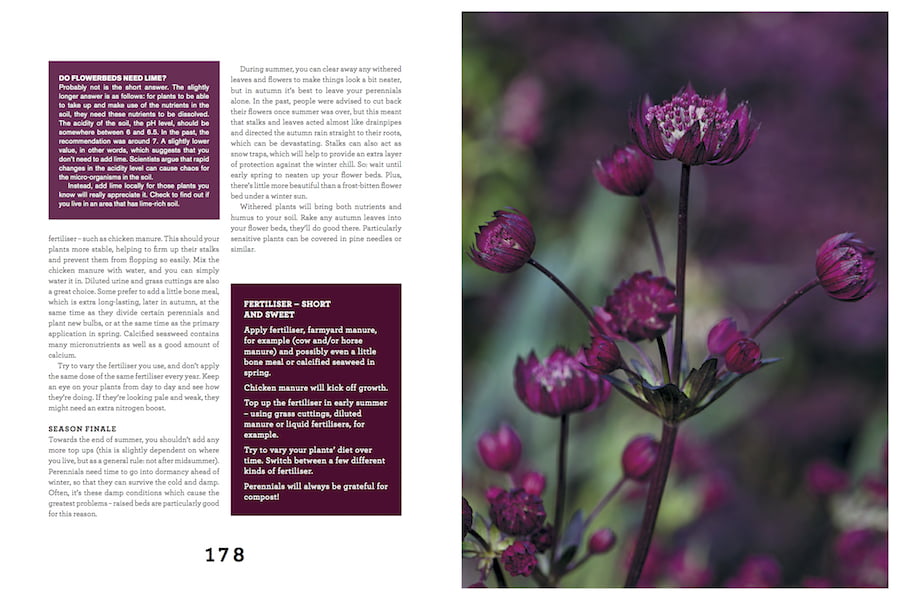
Good Soil pages 178-179
But these are minor issues. Good Soil fills a gap in my gardening library, and definitely a gap in my knowledge. A quick Google search revealed that many other books have been published about soil and gardening, but most are at least 15 years old and, as far as is possible to judge from their contents lists, they are broader in focus and don’t provide the specific, detailed treatment of the complex issue of soil nourishment that Good Soil offers. It occurred to me, having read and enjoyed this book – and looking forward, too, to using it – that some knowledgeable person should tackle this subject specifically for those of you who garden in tropical and subtropical climates.
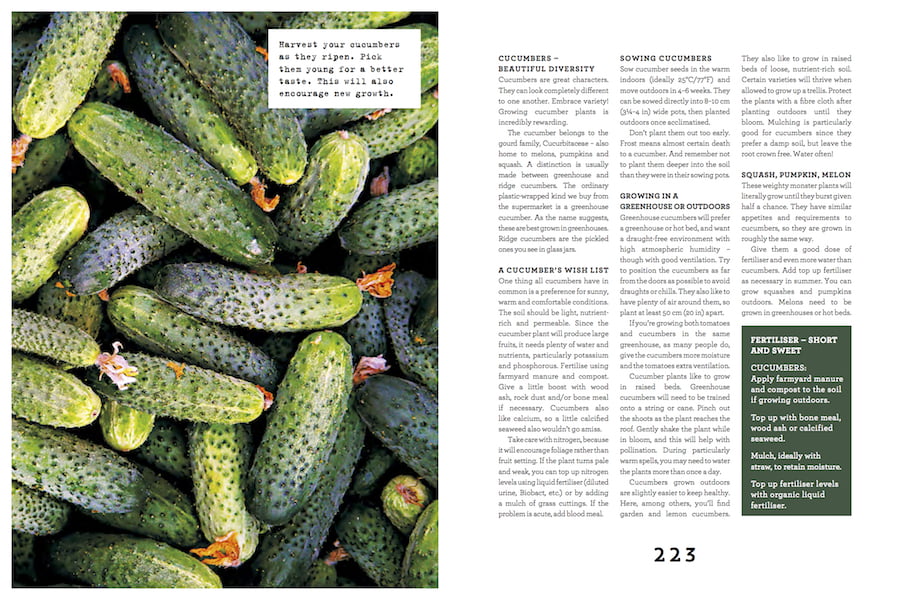
Good Soil pages 222-223
Good Soil by Tina Råman
Manure, compost and nourishment for your garden
Author: Tina Råman
Format: Hardback, 256 Pages
ISBN: 9780711238725
Publisher: Frances Lincoln
RRP US$29.99 / £20.00
[Available in Australia through Dymocks, or Angus and Robertson for RRP AU$39.99]
